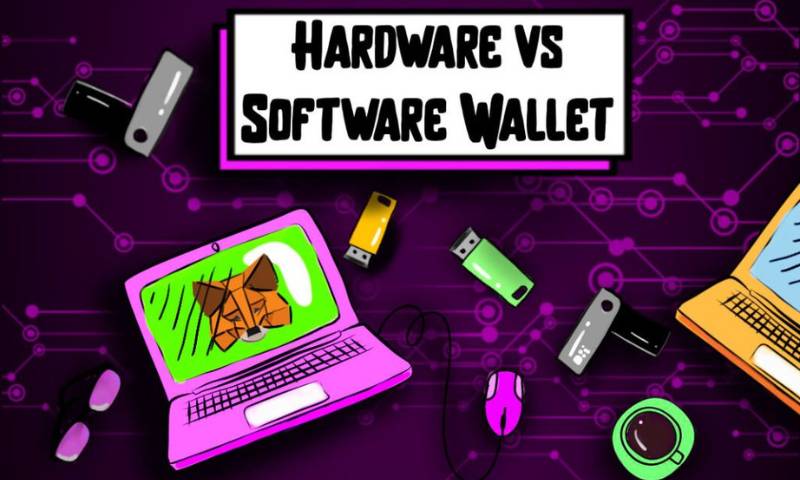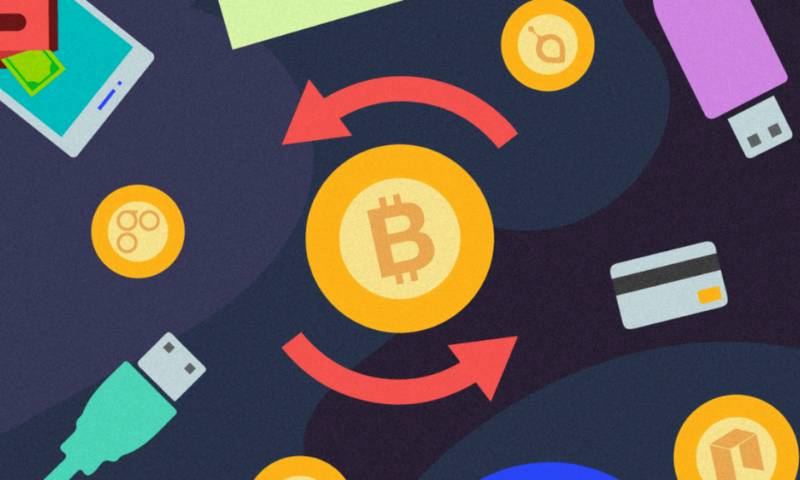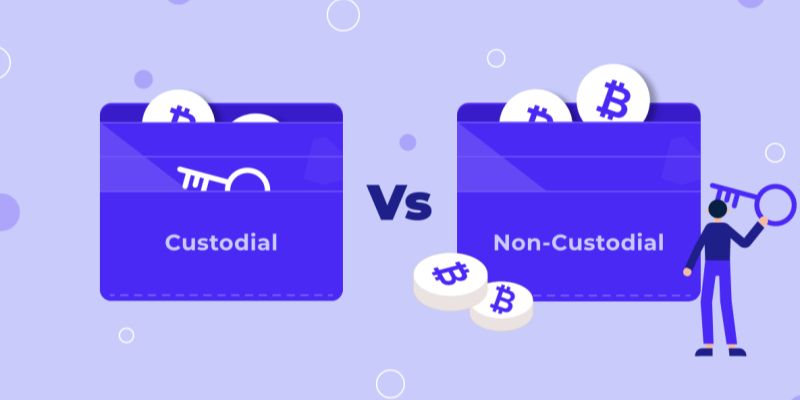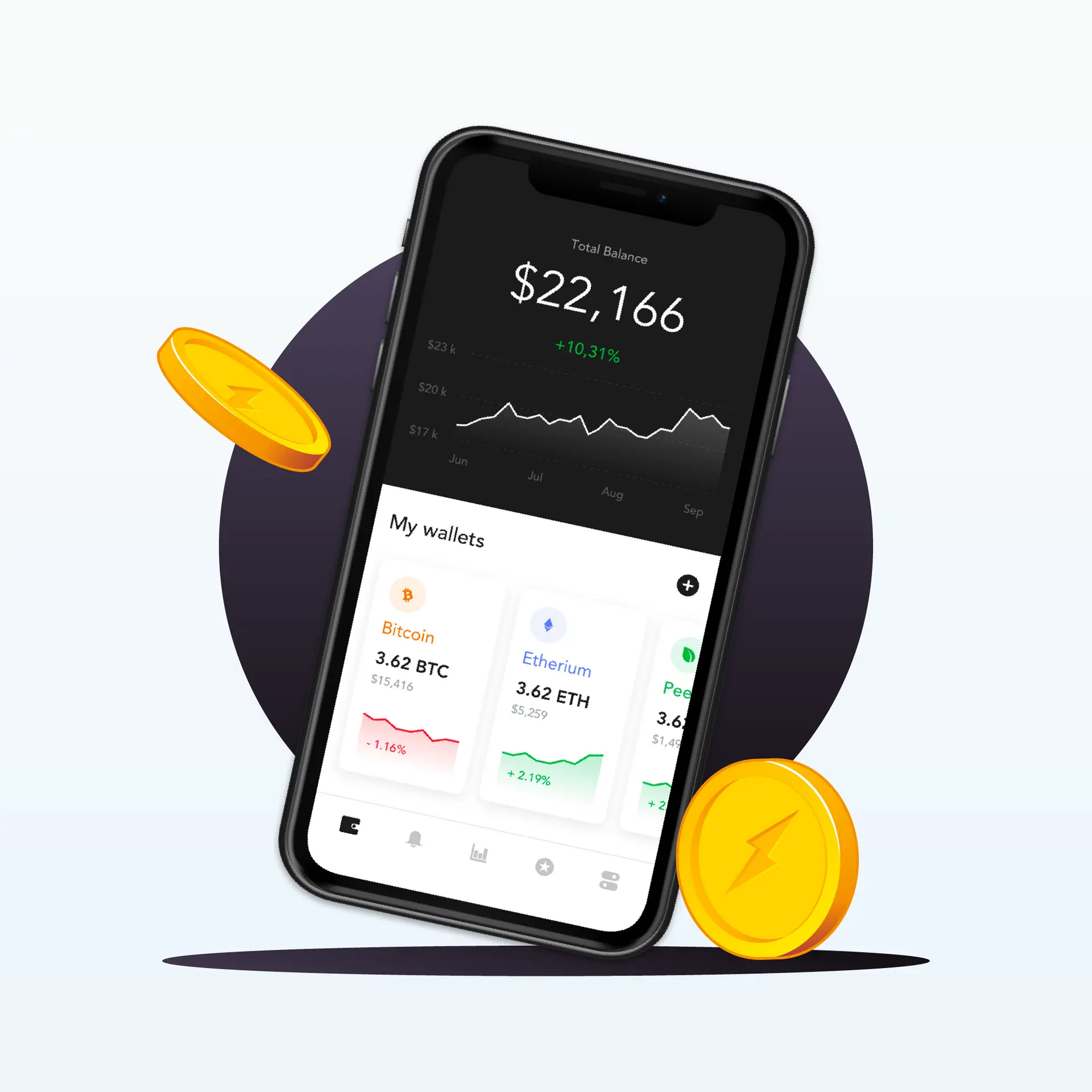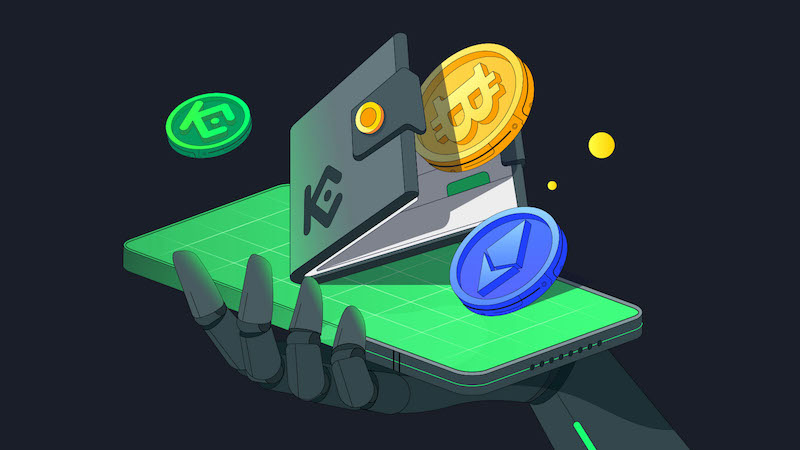**Your crypto wealth lies vulnerable to online threats, but not when armored with the right Hardware wallet desktop software. It stands as your ultimate line of defense. Let’s decode why, and how, this fortress works straight from your desktop. We’ll dive into choosing the most secure, manage it easily, and ensure it’s ironclad against any digital siege. Buckle up; safeguarding your crypto starts here and now!
Understanding Hardware Wallet Software for Your Desktop
The Importance of Secure Desktop Storage for Bitcoin and Other Cryptocurrencies
Secure desktop storage for Bitcoin matters. Your coins must be safe. Hardware wallet software for PC helps. It links to your physical wallet. This keeps hackers away. You store Bitcoin offline. This is cold storage.
But why use secure desktop storage for Bitcoin? Think of it as a safe. Banks use safes for money. So do you. But for digital coins. It protects from theft and hacks.
Choosing secure desktop hardware is smart. It’s like picking a good bike lock. You want your bike safe, right? Same with Bitcoin. Get good lock software. This makes sure only you touch your crypto.
Choosing the Best Desktop Wallets for Crypto: What You Need to Know
Looking for the best desktop wallets for crypto? Here’s what to know. Look for software that talks well with hardware wallets. This means easy syncing. Your desktop software should update without fuss. It keeps things safe.
Some wallets handle more than Bitcoin. These are multi-currency desktop wallets. They let you manage many coins. It’s handy. Just one app. No need for many.
User-friendly desktop wallet applications matter too. They should make sense. Easy to see. Easy to use. If it’s hard to use, find another. Managing crypto on desktop should be stress-free.
Remember, installing hardware wallet software should be simple. Follow the steps. If you get stuck, help should be near. Either online guides or customer support.
Keep these in mind when choosing. Safe, friendly, and plays well with your device. These make for happy crypto managing.
So take care. Pick well. Your crypto journey counts on it.
Setting Up and Managing Your Hardware Wallet Desktop Software
Step-by-Step Guide to Installing Hardware Wallet Software
Managing crypto on a desktop starts with a simple install. To start, find the right hardware wallet software for PC. Make sure it fits your hardware wallet type, like Trezor or Ledger. Now, let’s download the software from the official site. Here is how:
- Go to the wallet’s site.
- Pick the right version for your system.
- Click ‘download’.
- Open the file once the download ends.
Next, your PC will take you through steps. Follow them to install. This will often need you to agree to terms and maybe choose install options. When the setup ends, launch the software. Now your software is ready to sync up with your hardware wallet.
Before you can start, you must hook up your hardware wallet to your PC. Use the USB cable that came with the device. Then, the desktop app should spot your device. You may need to enter a PIN on the wallet or click a button to pair them.
When this is done, your assets will show in the desktop app. Your PC is now a window to your crypto funds!
Hardware Wallet Software Setup and Management Best Practices
To keep your digital cash safe, follow these best tips:
- Back-Up Your Data: Most wallets make a recovery seed phrase. Write this down and keep it safe, never on your PC or online. Think of this as the master key to your funds.
- Use Strong Passwords: When setting up, pick a tough password for your wallet app. Make it long and mix up letters, numbers, and symbols.
- Keep the Software Updated: Stay safe from threats by updating your desktop apps for cryptocurrency hardware wallet. Companies will release updates to fix weak spots.
- Practice Safe Use: Avoid shady links and downloads to your PC. Cyber crooks can sneak in malware that way.
- Learn the Features: Spend time with your new desktop client for hardware wallet. Knowing how it works helps you use it better and stay safe.
- Get Multi-Currency Support: If you hold various coins, you want a multi-currency desktop wallet. This way, you manage all your assets in one spot.
- Cold Storage is Key: Even when they’re not online, cold storage software keeps your coins secure. Think of it as a digital vault that hackers can’t touch.
- Regular Backups: Once in a while, back up your wallet data. The backup file must be kept in a secure location too.
Following these tips means you’re using your hardware wallet interface software well. This helps you take charge of your crypto, right from your desktop. You’ll want to keep learning and stay smart about how you handle your digital funds. After all, at the end of the day, it’s your money on the line. You now have a strong setup and savvy habits for your journey into crypto. Happy and safe trading!
Enhancing Security with Desktop Integration for Crypto Wallets
Encryption Standards for Desktop Hardware Wallet Software
Your crypto is valuable. It’s vital to keep it safe. How? By using the right hardware wallet software for your PC. The best desktop wallets for crypto all share one thing – strong encryption. Think of encryption like a tough lock on your digital treasure chest. It’s a mix of complex math that keeps sneaky hackers out.
The desktop client for your hardware wallet must have top-notch encryption. Why? Because it stores your private keys. These keys are like the secret codes to your coins. If your software has weak encryption, it’s like having a broken lock. Anyone could peek inside or even swipe your coins.
Now, imagine a secure desktop storage for Bitcoin. This is a place no one can reach without the right key. Even if they grab your PC, your crypto stays safe. That’s what high-end encryption offers. Songs about keys and locks are common, but here, we’re talking serious business.
Each time you use your hardware wallet interface software, encryption watches over your keys. They never show up as plain text. They always stay secret, even when you’re managing crypto on your desktop. That’s what keeps your coins secure.
Keeping Desktop Wallet Software Updated: Safeguarding against Vulnerabilities
Keeping your digital wallet software for the computer up-to-date is a big deal. Just like you care for your bike to avoid it breaking down, the same goes for your wallet software. Updates are patches. They fix security holes and add newer, stronger protections.
Think of a cold storage software like a superhero. It’s guarding against bad actors trying to take your stash. But even superheroes need upgrades. When there’s a new threat, those updates are your hero’s new powers ready to battle.
Sometimes, bugs sneak into desktop apps for cryptocurrency hardware wallets. The makers find these bugs and fix them, then send out an update. If you skip installing these updates, it’s like leaving your crypto out on a park bench. Not a good idea, right?
What about when new coins pop up? Your multi-currency desktop wallet needs to meet new pals. Updates introduce your wallet to these new coins. And what if your hardware wallet software setup seems a little wonky? An update might be the fix it needs. Updates keep your wallet sharp, kind of like how you need to learn new tricks to stay ahead.
Remember ledger live desktop app and Trezor suite for desktop? They’re great examples. They often send updates. This isn’t just fixing things; it’s also about getting new, cool features.
So here’s your takeaway: Always say ‘yes’ to updates. They’re your key ring to safer, better crypto handling. Stay on top of updates and keep your treasure chest locked tight. It’s simple – a well-maintained wallet is a safe wallet.
Regular updates are like a trusty guard always on duty. This, along with the silence of strong encryption, is your ultimate crypto guardian revealed.
Troubleshooting and Support for Desktop Wallet Users
Resolving Hardware Wallet Connectivity Issues on Desktop
Ever had trouble getting your hardware wallet to talk to your computer? It’s common, and I’m here to help you. First, check the cable and port. Sometimes it’s that simple. Then, ensure the hardware wallet’s software on your PC is up to date. Always keep your ledger live desktop app or Trezor suite for desktop fresh. Software updates can fix lots of bugs.
Does your PC still not see your wallet? Don’t worry. Try another USB port or cable. They can be picky. If your wallet uses Bluetooth, check if your PC’s Bluetooth is on and working. Also, check if your firewall blocks the connection. Firewalls watch over your PC’s safety, stopping bad traffic. But sometimes they overdo it and block your wallet.
Lastly, restart both the wallet and the computer. It sounds too easy, but trust me, it often works. If you’ve tried all these and still have trouble, reach out to the wallet’s support team. Their job is to get you connected and will walk you through more advanced steps.
Implementing Hardware Wallet Backup Solutions for Desktop Users
Keeping your crypto safe isn’t just about strong passwords. You need a solid backup. Let’s make sure you never lose access to your coins. First, every time you set up a hardware wallet, it gives you a recovery phrase. This is your crypto life-saving kit. Write it down. Store it somewhere super safe.
A recovery phrase is a series of words that stores all the info needed to recover your wallet’s funds. If your wallet ever gets lost, stolen, or damaged, this phrase will get your crypto back. It’s best to have several copies. And no, don’t store it on your PC or online. Paper or metal backups kept in different physical places are best.
Also, consider using a secure digital lockbox service for an extra layer of backup. Make sure their security is top-notch though. Now, if the desktop software for your hardware wallet ever acts up, check for updates. Like I said, updates are often the key to a smooth running system.
Backing up keeps your mind at ease. And peace of mind is priceless, especially in the crypto world. Remember, your funds’ security depends on both the careful handling of your hardware wallet and solid backup routines. Take them seriously, and your crypto journey will be much smoother.
Remember, when dealing with tech, issues will pop up. But with the right approach, they’re no big deal. Stay calm, go through the steps, and your crypto will stay safe and sound.
In this guide, we’ve journeyed through the must-knows of desktop hardware wallet software. From the key reasons to secure your digital coins to choosing a top wallet, you’re now informed. Next, we walked you through setting up your wallet software, with steps to keep everything running smooth. The need for tight security was clear as we discussed encryption and updates. Lastly, we tackled common hitches and backup strategies.
On final thoughts, the true power of a well-managed hardware wallet is peace of mind. Knowing your crypto sits safe makes all the difference. Keep learning, stay updated, and your digital treasure will be as secure as can be. Safe trading!
Q&A :
What is a hardware wallet desktop software?
A hardware wallet desktop software is a local application that you install on your computer to act as an interface with your hardware wallet. It allows users to manage their cryptocurrency assets securely. This software typically supports various operations, such as sending and receiving cryptocurrency, viewing account balances, and managing private keys in coordination with the hardware wallet, ensuring enhanced security.
How does desktop software interact with a hardware wallet?
Desktop software acts as a bridge between your hardware wallet and the blockchain of your cryptocurrencies. When you initiate a transaction, the desktop software prepares it and then sends it to the hardware wallet for signing with the private keys. The keys never leave the device, making transactions secure. Once signed, the transaction is sent back to the desktop software, which then broadcasts it to the network.
Are hardware wallet desktop applications compatible with all operating systems?
Most hardware wallet manufacturers offer desktop applications that are compatible with the major operating systems, such as Windows, macOS, and Linux. However, it is always important to check the product specifications or the official website to ensure the software you intend to use is supported by your operating system.
Can you use multiple hardware wallets with the same desktop software?
Yes, many hardware wallet desktop applications allow you to manage multiple devices within the same software. This can simplify asset management for users who own more than one hardware wallet or who wish to use different wallets for different purposes, like having separate wallets for long-term savings and daily transactions.
What security measures should you take when using hardware wallet desktop software?
When using hardware wallet desktop software, always ensure that you:
- Download the software from the official source to prevent installing malicious software.
- Keep your desktop software and hardware wallet firmware up to date to benefit from the latest security enhancements.
- Protect your computer with up-to-date antivirus and malware protection to prevent security breaches.
- Never share your recovery seed or private keys with anyone.
- Consider using a dedicated, secure computer for your crypto transactions if possible.

